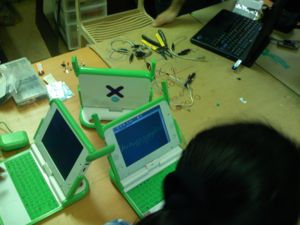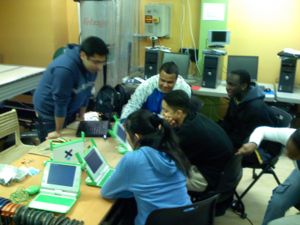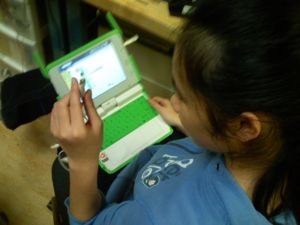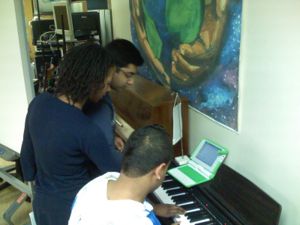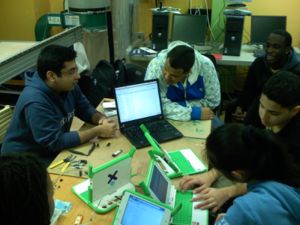Turtle Art with Sensors: Difference between revisions
No edit summary |
No edit summary |
||
| Line 10: | Line 10: | ||
===Some ideas=== |
===Some ideas=== |
||
//screenshots of new turtle art sensors block |
|||
//sensor experiments |
|||
===Sensors - how to and where from=== |
===Sensors - how to and where from=== |
||
Revision as of 22:48, 1 February 2008
For users
Downloading and running the Activity
This is the direct download link. Instructions for installing Activities and also the download link is on the Activities page. Look for Turtle Art with Sensors there.
Latest -- The Activity now works in Spanish too
Some ideas
//screenshots of new turtle art sensors block //sensor experiments
Sensors - how to and where from
For educators
Rationale
Participation
Connecting Sensors
Showcase
Note: All the children's' names are fictional
On Wednesday, 23rd January, 2008 we had a Turtle Art with Sensors session at the Fablab in Boston. The FabLab at Boston is , amongst the many FabLabs around the world, the closest to the MIT Media Lab research group that has initiated and implemented this concept. See Center for Bits and Atoms.
Fab Lab is an abbreviation for Fabrication Laboratory. It is a group of off-the-shelf, industrial-grade fabrication and electronics tools, wrapped in open source software and programs written by researchers at the Center for Bits and Atoms. It is a place where basically anyone can come and create At any given time one can usually see a lot of interesting projects going on there. For example a lady was working on printing T-shirts with a "Give one get one (hug)" logo This was for a charitable program that her father has started. Then I met a young college student who had come to the FabLab to make a generic LED dot-matrix display, the design for which can be scaled to any meet any design/pattern of any size. His current aim was to build an analog clock from the dot matrix display. The overall atmosphere at the FabLab is quite creative and the people one sees there are really involved in 'creating'
Edward Baafi is the person who oversees and co-ordinates the Activities of the Fablab. He is always around to help - whether it is some problem with the Modella machine or it is a programming doubt - Edward can usually solve all your queries.
A group of high school students meets up every Wednesday at the FabLab. The meet up is supervised by Edward Baafi and they discuss their experiences of the week teaching younger kids in schools nearby. When the kids came in, Edward Baafi explained to them that today's focus was going to be sensors with Turtle Art. They came to a place where I had taken out an assortment of sensor-cables.
We started talking about the XO and their views on the laptop. As soon as we all sat down, Ken couldn't wait to ask me "why is the XO better than the Classmate PC?" Ken is very technologically aware and is used to checking his email on his T-mobile email enabled phone. It wasn't hard for him to understand the technological as well as the educational focus areas of the XO laptop that make it different from any other laptop.
All of the kids - Ken, Ben, Grace, Manu, Andriani, are aware of Turtle Art, Scratch and programming environments. They've been used to using computers while working with younger kids from nearby areas; they've just recently been doing it using XOs.
Contact
The original author of Turtle Art activity is Brian Silverman
Sensor support has been added by Arjun Sarwal who can be contacted via details given on his user page
